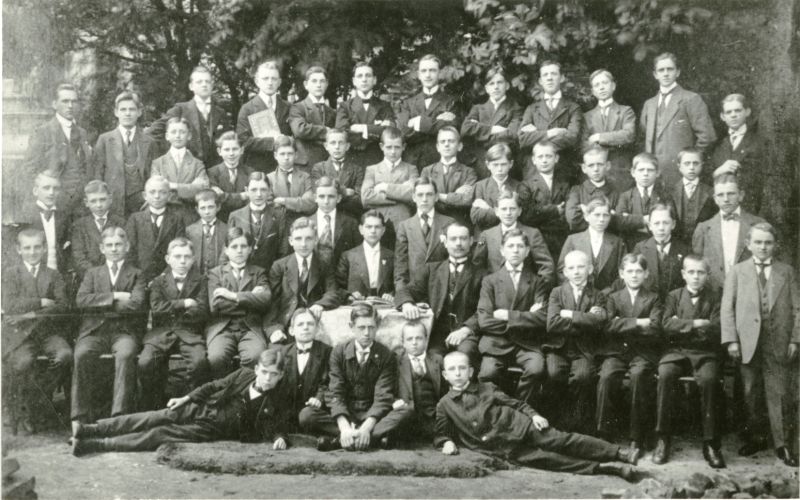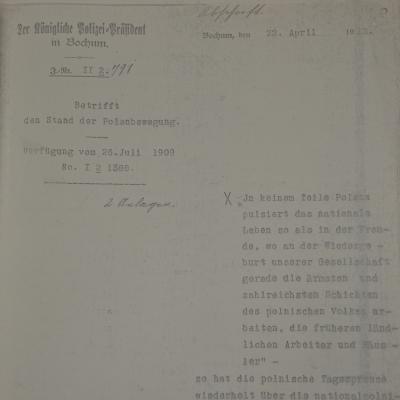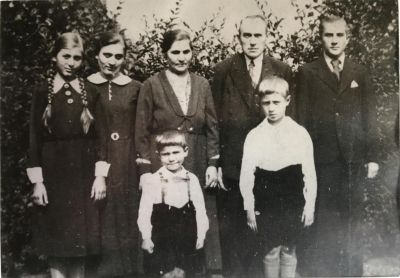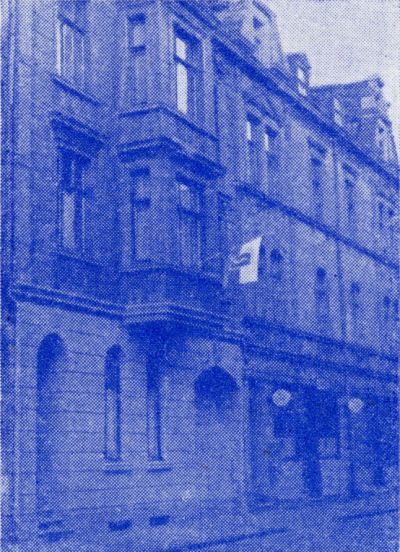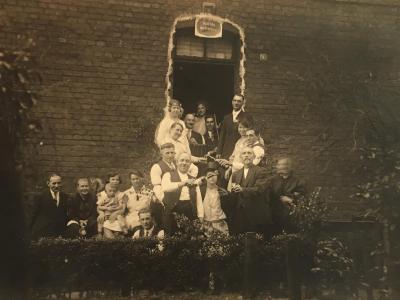The Ruhr Poles
Mediathek Sorted
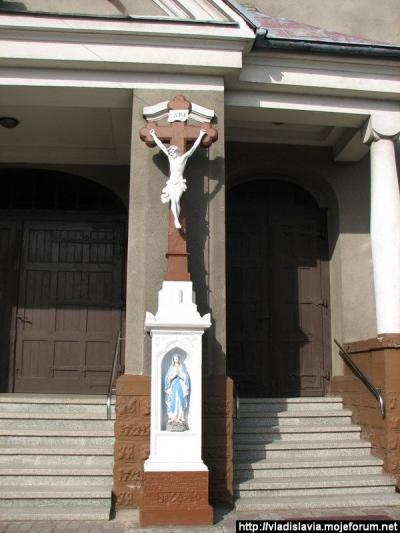
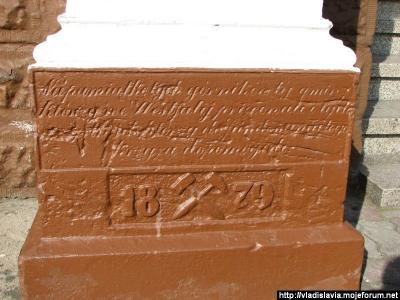
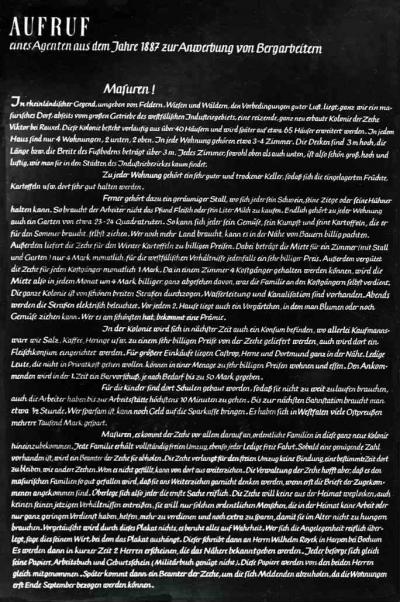
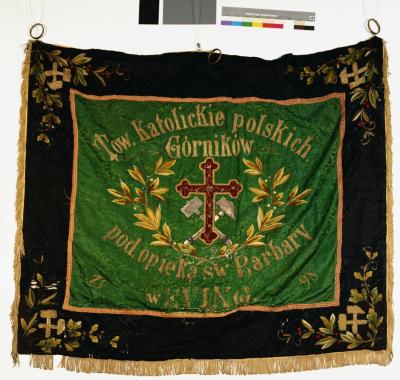
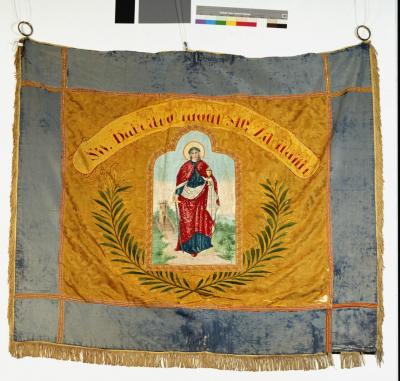
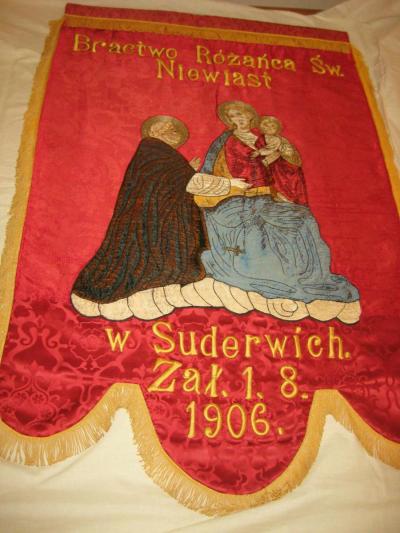
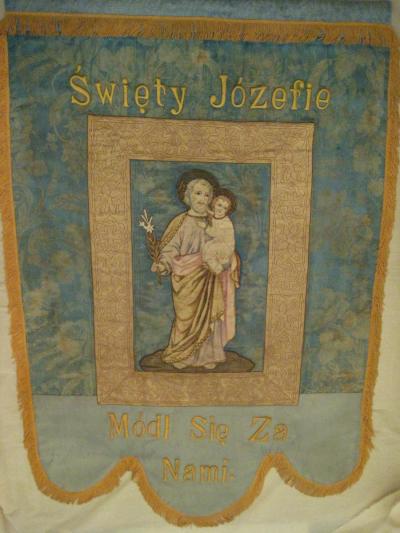
![Flag of the Mickiewicz Choral Society from Oberhausen 1898, front Flag of the Mickiewicz Choral Society from Oberhausen 1898, front - Flag of the choral society "Mickiewicz" from Oberhausen, founded on 30 May 1898, inscription on the back: "Cześć Pieśni" [honour to the song]](/sites/default/files/styles/width_100_tiles/public/assets/images/gesangverein_mickiewicz_fahne_2.jpg?itok=XgzeW2hv)
![Flag of the Mickiewicz Choral Society from Oberhausen 1898, reverse Flag of the Mickiewicz Choral Society from Oberhausen 1898, reverse - Flag of the choral society "Mickiewicz" from Oberhausen, founded on 30 May 1898, inscription on the back: "Cześć Pieśni" [honour to the song]](/sites/default/files/styles/width_100_tiles/public/assets/images/gesangverein_mickiewicz_fahne_1.jpg?itok=z2SaZxxf)


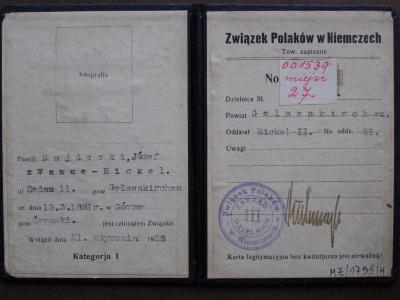
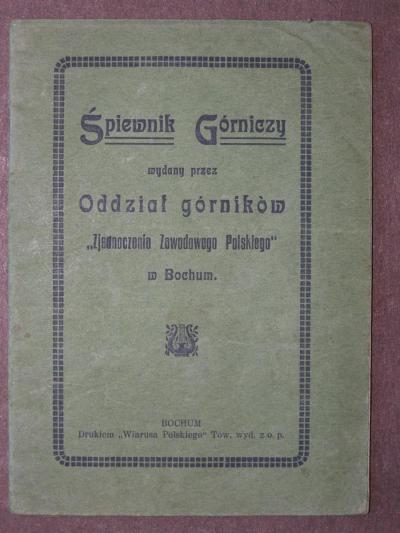
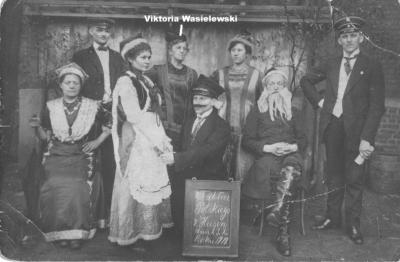
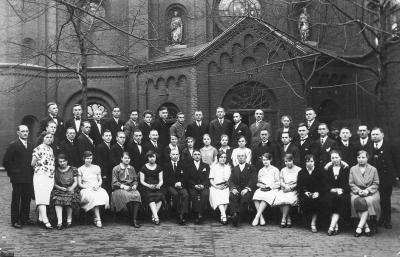
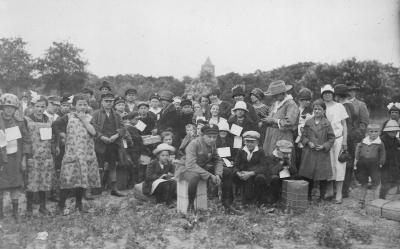
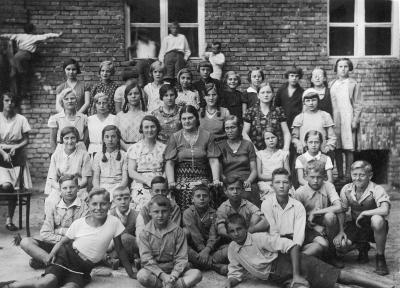
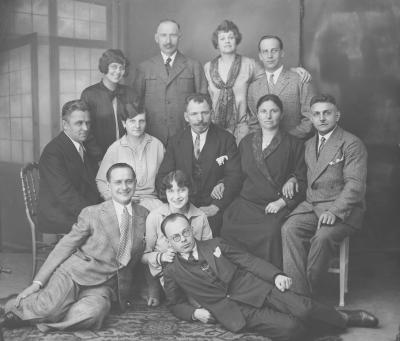
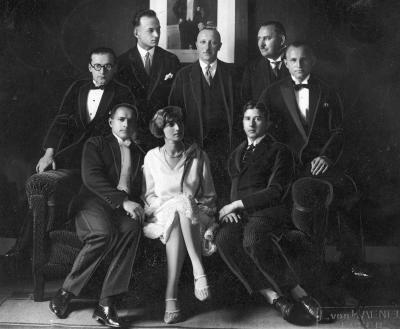
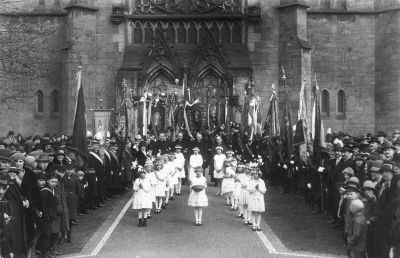
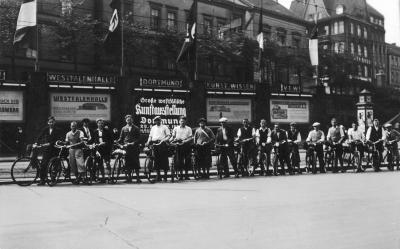
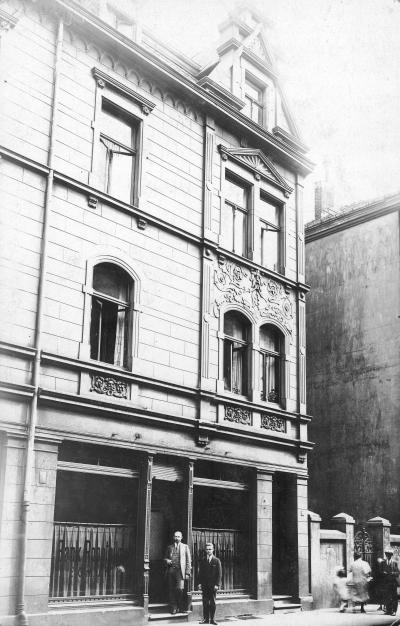
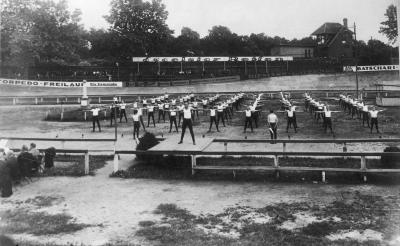
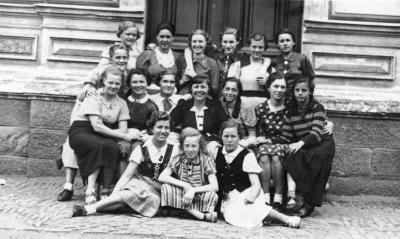
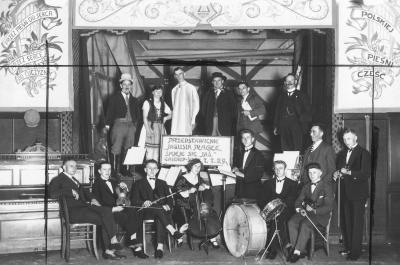
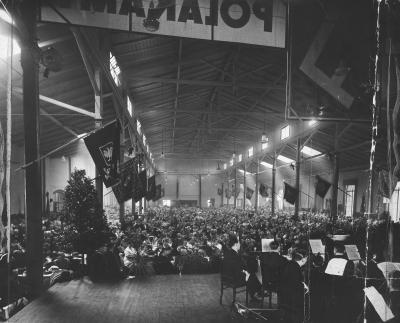
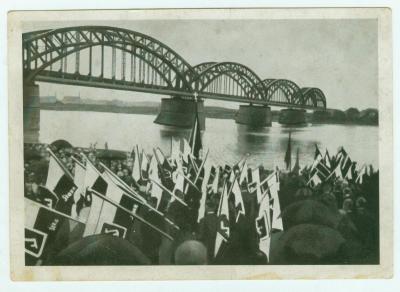
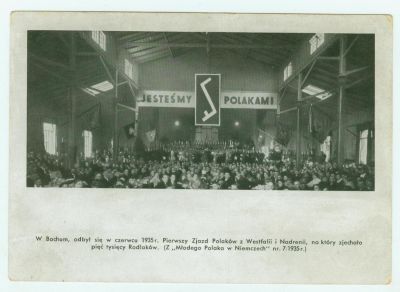
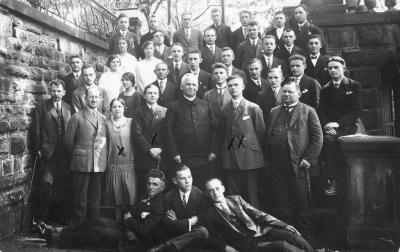

Die „Ruhrpolen“ - Hörspiel von "COSMO Radio po polsku" auf Deutsch

Introduction
A glance at the two-volume encyclopedia of surnames of Polish origin in the Ruhr area is enough to get an idea of how close the genealogical relationship between Germans and Poles is - especially in the Rhine and Ruhr regions. On the basis of telephone directories from 1994 to 1996 alone, the authors identified more than 30,000 Polish surnames in the Ruhr area. This does not take into account German variants of Polish surnames and name transformations, or Germanised forms of originally Polish surnames, not to speak of family members and persons with no telephone connection or with a telephone number hidden behind the individual telephone directory entries during the said period.[1]
The background to this close relationship is made up of several westward migration phases from areas with an ethnic Polish population, or from a Polish state between the middle of the 19th century and the present day. The most comprehensive of these migrations took place in the Rhineland Westphalian industrial area between 1870 and the start of the 1920s. In contrast to overseas emigrations that took place at the same time and were also designated as migration processes, this migration movement, which was known under the heading "Ost- bzw. Landflucht" (migration from Eastern resp. rural Prussia), was an internal migration within Prussia and the German Reich: i.e. the emigrants were Prussian citizens who were free to choose their place of work and life on the basis of the Reich Law on Freedom of Movement passed in November 1867. According to calculations made by researchers on the basis of Prussian statistics, during this period up to half a million Polish-racial or Polish-speaking people emigrated from rural eastern provinces in Prussia to the Rhine-Ruhr industrial area.[2] That said, the most recent studies and comparisons of individual emigration figures from certain regions (including Upper Silesia, as well as the inaccuracy and, at times, deliberate manipulation of Prussian statistics and the high fluctuation of immigration, repatriation and onward migration that is not reflected in these statistics), point to a considerably higher number of persons who were living and working in the Rhine and Ruhr around 1900, at least for on a temporary basis.[3]
About one third of the migrants, for whom the term Ruhr Poles has established itself in research, came from each of the provinces of Poznan and East Prussia, above all from the Masurian provinces (Polish-speaking Protestants),[4] and southern Warmia, which was also largely Polish-speaking but Catholic. In addition to the two largest groups, several tens of thousands of immigrants each came from West Prussia, Kashubia and the province of Silesia, especially from the southern part of the administrative district of Opole (Polish-speaking Catholic Upper Silesians). The main reasons for migration were economic. The population growth that gained momentum in the 19th century had led to overpopulation in the rural regions of origin. Moreover, these regions were industrially underdeveloped or not developed at all (with the exception of Upper Silesia). Above all they offered young men few job opportunities, poor living conditions and hardly any future prospects.[5]
[1] Rymut, Kazimierz/Hoffmann, Johannes (eds.): Lexikon der Familiennamen polnischer Herkunft im Ruhrgebiet, 2 volumes, Kraków 2006, pages XXXV–XXXVI.
[2] cf. amongst others: Murzynowska, Krystyna: Die polnischen Erwerbsauswanderer im Ruhrgebiet während der Jahre 1880–1914, Dortmund 1979, pp. 25–26. Also other scholars like Witold Matwiejczyk and Valentina-Maria Stefanski, refer to Murzynowska's presentation and Prussian statistics.
[3] Skrabania, David: Keine Polen? Bewusstseinsprozesse und Partizipationsstrategien unter Ruhrpolen zwischen der Reichsgründung und den Anfängen der Weimarer Republik, pp. 45–47 (unpublished thesis, Bochum 2018, The thesis can be seen at Porta Polonica).
[4] The group of Ruhr Poles also included Masurians, whose specific characteristics mean that they will not be included in the rest of this text. The circumstances and causes of the Masurian migration process to the Rhine and Ruhr were very similar to those of the other Prussian eastern provinces. They, too, were a Polish-speaking and Slavic people who, although they had been politically integrated into the Kingdom of Prussia since the 17th century, retained their own characteristics even into the 20th century, for example with regard to Protestantism strongly interspersed with elements of Catholicism or their spoken dialect, an old Polish dialect. In the Rhineland-Westphalian industrial area, Masurians were often set apart from other Polish-speaking migrants as well as from the German-speaking majority society. At least partially, their religious denomination and a fundamental Prussian royalism facilitated their integration and assimilation in the Rhineland-Westphalian industrial area. However, two factors seem to have played a more significant role. Firstly, the agrarian, very sparsely populated and economically extremely weak Masuria offered hardly any opportunities to return and earn a living. Secondly, dozens of Masurian villages were de facto dissolved as a result of migration to the Rhine and Ruhr, and entire villages often suffered severe population losses, including preachers. Thus, it was practically impossible for many Masurians to return during or shortly after migrating. See Kossert, Andreas: Masuren. Ostpreußens vergessener Süden, Berlin 2001; Jasiński, Grzegorz: Mazurzy w drugiej połowie XIX wieku. Kształtowanie się świadomości narodowej, Olsztyn 1994.
[5] Kleßmann, Christoph: Polnische Bergarbeiter im Ruhrgebiet 1870–1945. Soziale Integration und nationale Subkultur einer Minderheit in der deutschen Industriegesellschaft, Göttingen 1978, pp. 24–27.
The beginnings of migration
It can be shown that the first groups of Polish workers came to the Ruhr area at the beginning of the 1870s, specifically to the town of Bottrop. These skilled miners from Upper Silesia, with an average age of just under 30, were intended to help compensate for the shortage of experienced workers in the newly commissioned mines in the Ruhr area.[6] A few years later the demand for qualified miners could be primarily covered by graduates from Westphalian mining schools. That said, the general demand for labour could still not be satisfied by workers immigrating from the border regions of Westphalia or from more distant German-speaking regions, such as the Hunsrück. The upshot was, that tens of thousands of young men - some of them still minors - from the rural regions of East Prussia flocked into the industrial area of Rhineland Westphalia to work in the local mines and industrial enterprises. The more courageous ones who set off from villages in eastern Prussia were their role models and "big heroes" for the following generations, who paved their way to the West: "If you had 20 marks [for a railway ticket] on you, you travelled to Westphalia. The younger ones waited until they were 16 years old to set off for Westphalia to make "big money"'.[7] Whereas the first miners were recruited to work in the Ruhr almost exclusively by professionals, it only took a few years for new workers to be recruited by word of mouth from the villages inhabited by the pioneer migrants. A lively exchange of letters took place between the places of destination and origin, and also between family members, neighbours and acquaintances of the first immigrants. This migration pattern, which goes far beyond the sociological concept of chain migration, can best be described as pioneer migration.
From the middle of the 19th century onwards, the increasingly dense railway network in Central and Eastern Europe made mass migrations possible. With the introduction of a 4th class, tickets became affordable and the railways promoted the mobility of the masses in an unprecedented manner. The cost of a ticket for a two-day journey from a station in the eastern provinces to Westphalia was roughly equivalent to the weekly wage of a normal miner and was often paid for in advance by family members, acquaintances or the collieries which hired them.[8] The Rhineland-Westphalian industrial area became a place of yearning for thousands and thousands of young men (and in time also women), who not only sought to secure a livelihood, but also a better life: "Many a young person wanting to emigrate to richer countries [...] did not hesitate for long, but set out for the land of his yearning. Hymns of praise for that unknown land shot out of their mouths. When they heard such songs of praise, every Pole in a deplorable position in Poznan and Silesia felt a great joy and longing for such a blessed land."[9]
[6] cf. Budraß, Lutz: Von Biertultau (Biertułtowy) nach Batenbrock. Oberschlesier in Bottrop, in: Budraß, Lutz/Kalinowska-Wójcik, Barbara/Michalczyk, Andrzej (Hg.): Fallstudien zur Geschichte des oberschlesischen Industriereviers im 19. und 20. Jahrhundert, pp. 124–127.
[7] Hurski, Ludwik: Z pamiętnika Westfaloka, edited with an ontroduciton by Henryk Olszar (Źródła do dziejów Kościoła Katolickiego na Śląsku, Nr. 5, Red. Jerzy Myszor), Katowice 2014, p. 39 [Translation: David Skrabania].
[8] Kurek, Jacek: Kolej i tożsamość . Kilka sugestii ze Śląskiem i Galicją w tle, in: Keller, Dawid (Hg.): Znaczenie kolei dla dziejów Polski. Studia z historii kolejnictwa, Rybnik 2012, p. 16; Hurski: Z pamiętnika, pp. 45–48.
[9] Geschichte einer polnischen Kolonie in der Fremde. Jubiläumsschrift des St. Barbara-Vereins in Bottrop, Oberhausen 1911 (Kirche und Religion im Revier. Beiträge und Quellen zur Geschichte religiöser und kirchlicher Verhältnisse im Werden und Wandel des Ruhrgebiets, 1968; Translation made in 1954, pp. 1–2.
The immigrants – shaped by their common roots
The majority of the Ruhr Polish immigrants came from a rural, West Slavic population who spoke Polish dialects. With regard to customs and traditions, the people in the regions of origin were firmly embedded in their respective regional and local contexts, and had very little contact with German-speaking elites. Village areas remained relatively isolated with their own internal hierarchies, rules and rituals. The course of the year was structured by Sundays and public holidays, and individual mobility was severely restricted.[10] In addition, a specific popular religiosity in rural Polish regions determined their morals and values, their actions and thoughts. Hence this was a decisive factor in shaping their consciousness.[11] However, despite (or above all because of) these limitations, their native country also offered them security. Hence the first wave of migrant workers were completely uprooted from their familiar social and cultural environment. Experiences of alienation (a lack of language skills and a lack of understanding of the local conditions and demands, as well as the simultaneous absence of their own elites who could offer them some structure, orientation and pastoral care), led to social problems, especially in the early years of immigration;[12] and these factors were exacerbated by the heavy, previously unknown, work underground: "All the physical pain was just a drop in the ocean compared to the moral suffering [...] I was afraid of the surrounding darkness. I kept thinking of the 'spirits' in stories and fairy tales we had been frightened with. I imagined that such spirits, if they existed, could only exist in such darkness".[13]
Against the background of local and regional ties and mentalities, the popular religiosity they brought with them from their native regions, and the specific form of pioneer migration, helped to shape their common roots wherever they settled. On the other hand, associations with a religious orientation, initially determined by their regional origins, also developed. The extensive continuity in settlement structures between the region of origin and the target region was accelerated by the construction of colliery housing estates and the growing system of taking in workers as boarders. When workers' families succeeded in renting their own housing, they tried to increase their income by taking in and providing for subtenants. The main beneficiaries were family members, acquaintances and neighbours from their homeland or people from their own milieu who had a good reputation and were of the same denomination as the host family. In the Rhineland-Westphalian industrial area the ensuing trust that developed over and beyond this, spread only very slowly (and with an increasing length of stay) to include potential boarding tenants from other regions of origin. In this way, entire streets, settlements and districts arose whose inhabitants were mostly immigrants from specific regions in eastern Prussia.[14] For example, immigrants from the province of Poznan generally tended to concentrate in certain districts in Dortmund, Bochum and Essen; the Gelsenkirchen area was the core settlement area of Masurians,[15] while Upper Silesians were mainly to be found in the north of the Ruhr area in and around Bottrop, Gladbeck, Borbeck and Osterfeld.[16]
[10] Skrabania: Keine Polen?, pp. 93–95.
[11] Ibid. p. 104–105.
[12] Matwiejczyk, Witold: Katolickie towarzystwa robotników polskich w Zagłębiu Ruhry 1871–1894. Rozwój organizacyjny a świadomość narodowa, vol. 1, Lublin 1999, p. 87.
[13] Pamiętniki emigrantów 1878–1958, with a foreword by: Kazimierz Koźniewski, Warszawa, p. 23 [Translation: David Skrabania].
[14] cf. Budraß: Von Birtultau, pp. 127–133.
[15] Kornatowski, Wiktor/Malczewski, Kazimierz (eds.): Wspomnienia Opolan, Warszawa 1960, p. 103–104.
[16] Kleßmann, Christoph: Integration und Subkultur nationaler Minderheiten. Das Beispiel der „Ruhrpolen“ 1870–1939, in: Bade, Klaus J. (ed.): Auswanderer. Wanderarbeiter. Gastarbeiter. Bevölkerung, Arbeitsmarkt und Wanderung in Deutschland seit der Mitte des 19. Jahrhunderts, Ostfildern 1984, p. 491.
Ruhr-Polish associations caught between national Polish pressure and official discrimination
The system of Ruhr Polish associations developed in a similar manner. As a reaction to the lack of social structures and the need for communication and leisure activities outside the world of work, the Ruhr Polish community began to establish its own clubs and associations in 1877. Between 1885 and 1893 the diocese of Paderborn successively assigned the pastors Józef Szotowski and Franciszek Liss from West Prussia to administer pastoral care to the Poles in the Rhine and Ruhr areas. From then on new clubs and associations not only increased strongly under the guidance of the two Polish priests, but took on an explicitly religious character. This was reflected, among other things, in the symbols used by the clubs and their choice of patron saints. Political activity was precluded in the clubs which, in addition to religious purposes, were used to raise ethical standards and levels of decency, to cultivate traditions and offer their members protection and support:[17] "The associations helped to give emigrants a sense of pride, and offered them a change from the monotony of everyday life and their difficult lot. Industrial workers, in particular, needed spiritual support more than anyone else, for without it the monotonous everyday life might have turned them into machines."[18]
For many years the character of Polish Catholic associations was based on their members' region of origin. Thus the St. Barbara association in Schalke only accepted members who, according to paragraph 2 of the association's statutes, were "honest Upper Silesian workers belonging to the Catholic religion".[19]Even if the element presupposing a certain regional origin gradually disappeared from the statutes of the associations, the settlement structures in the individual districts in the Ruhr as described above, often continued to have a strong regional bias. In 1893 when Pastor Liss was recalled, Jan Brejski, a Polish publisher and politician, took over the newspaper "Wiarus Polski", which Liss had founded and managed. From then on Polish national elites attempted to increase their influence on the associations by holding lectures and readings on the history and culture of Poland and organising special festivities like "Kościuszko ceremonies" under national auspices, and celebrating the anniversary of the constitution on 3rd May. The aim was to water down the Catholic character of the associations until it was merely a component of national Polish identity.[20]
Sometimes these efforts bore fruit, and some of the Ruhr Polish immigrants began to develop a national Polish consciousness that transformed existing local, regional and religious awareness. The fact that Prussian authorities particularly discriminated against the structures of Polish associations also played an important role. The Poles' experience of Bismarck's Kulturkampf in general, and the dismissal of the Polish pastors Szotowski and Liss at the instigation of the Prussian authorities in particular, had strengthened their distrust of state institutions. And starting in the late 1890s, increasingly extensive police surveillance of the meetings of the Ruhr Polish associations tended to consolidate the Ruhr Polish population. Official measures against Polish structures culminated in the creation of the "Central Office for the Supervision of the Polish Movement" in Bochum in 1909. This body was even unwilling to believe the statutes of those associations which specifically ruled out political activity. For example: "Although the statutes of this association stipulate that politics should not be pursued, it can be assumed that, like other Polish associations, it will demonstrably solicit support for the Polish national cause."[21]
[17] Matwiejczyk, Witold: Zwischen kirchlicher Integration und gesellschaftlicher Isolation. Polnische Katholiken im Ruhrgebiet von 1871 bis 1914, in: Dahlmann, Dittmar/Kotowski, Albert S./Karpus, Zbigniew (eds.): Schimanski, Kuzorra und andere. Polnische Einwanderer im Ruhrgebiet zwischen der Reichsgründung und dem Zweiten Weltkrieg, Essen 2005, p. 13–14.
[18] Wachowiak, Stanisław: Polacy w Nadrenii i Westfalii, Poznań 1917, p. 108 [German translation: David Skrabania].
[19] STAM-RA I Nr. 124, quoted from Brandt: Die Polen, p. 61.
[20] Skrabania: Keine Polen?, pp. 79–82.
[21] StA Recklinghausen, AA1723, Der Landrat zu Recklinghausen an die Ortsbehörden des Kreises vom 15. März 1909, Bl. 157.
Even in previous years official discrimination against the Polish population had been greatly expanded. The so-called "language and muzzle paragraph", a component of the 1908 Reichsvereinsgesetz (Imperial Association Act), severely restricted the use of the Polish language in public in districts where less than 60% of local residents were Polish native speakers at the time of the last census.[22] Moreover, the 1904 amendment to the Resettlement Act in conjunction with the 1908 Colonisation Commission in some East Prussian regions, which tried to attract German settlers, made it almost impossible for Polish Prussians to acquire building land in the Eastern provinces, and destroyed the dreams of many Ruhr Poles of returning home and acquiring houses and farms.[23] From time to time absurd measures were taken to interfere with the everyday life in the Ruhr Pole associations. One such occurred in 1904 in Wanne, where a ban on the use of the Polish language in communion classes, confessions, baptisms, weddings and funerals was justified by the need to combat "political-Polish agitation".[24] Some authorities arbitrarily extended the concept of 'political' to almost all areas of social and religious life, all the way to the above-mentioned prohibitions in the religious sphere. As a result, large sections of the highly religious Ruhr Polish population were unable to understand the concept, and at times this provoked violent agitation.
By 1912 Polish immigrants in the Rhineland-Westphalian industrial region had founded nearly 900 associations with a total of more than 80,000 members.[25] However, this number was relativised by the high proportion of multiple memberships, as it was not unusual for one person to be a member of several clubs at the same time.[26] It is also worth mentioning that the Polish Professional Association (Zjednoczenie Zawodowe Polskie, ZZP), founded in 1902, accounted for a large part of the total number of association members: ten years after its foundation, it had around 30,000 members in the Ruhr area alone.[27] On the one hand, its success was based on a level structure with numerous branches in towns and districts of the Rhineland-Westphalian industrial region; and on the other hand it was based on its diverse range of services. Membership offered personal comprehensive employment and insurance coverage (and in the event of death also for the family), as well as the opportunity to meet up and enjoy themselves.[28] In the years prior to the outbreak of the First World War, the militarily organised national-Polish gymnastics clubs (Sokół) with their approximately 6,000 members in the Rhine and Ruhr areas were also highly successful. After 1918, however, they quickly lost influence and the general association of Sokół clubs in Rhineland and Westphalia was dissolved in 1927. Here two factors were decisive: on the one hand, many active members left the Ruhr area after 1918. And on the other hand, the Sokół clubs lost a huge number of members to the numerous football clubs that had been set up in the towns and districts of the Ruhr area since the 1920s.[29]
[22] Oenning, Ralf Karl: „Du da mitti polnischen Farben…“. Sozialisationserfahrungen von Polen im Ruhrgebiet 1918 bis 1939, Münster/New York 1991, p. 19.
[23] Peters-Schildgen, Susanne: „Schmelztiegel“ Ruhrgebiet. Die Geschichte der Zuwanderung am Beispiel Herne bis 1945, Essen 1997, p. 36.
[24] Matwiejczyk: Zwischen kirchlicher Integration, p. 31.
[25] Peters-Schildgen, Susanne: Das polnische Vereinswesen in der Kaiserzeit und in der Weimarer Republik. Ein Vergleich, in: Dahlmann u.a.: Schimanski, p. 61.
[26] Wachowiak: Polacy, p. 99.
[27] Kleßmann, Christoph: Zjednoczenie Zawodowe Polskie ZZP – polnische Berufsvereinigung und Alter Verband im Ruhrgebiet (Internationale wissenschaftliche Korrespondenz zur Geschichte der deutschen Arbeiterbewegung, 15. Jg. 1979,, Heft 1), p. 69.
[28] StA Hattingen, SHC01-397, Übersetzungen..., No. 6, 1913, 7. February 1913, Was lehren die christlichen Gewerkschaften den polnischen Arbeiter, in: Wiarus Polski, No. 22, 28. January 1913; Wachowiak: Polacy, pp. 117 and 162–163.
[29] Skrabania: Keine Polen?, pp. 132–134.
Increasing willingness to integrate and economic success
Nevertheless, many Ruhr Poles withdrew from the Polish club network over the years, and increasingly joined local German clubs. After the turn of the century, in addition to Prussian war clubs (in which former soldiers kept alive the memory of their military service regardless of their regional origin), and the rosary clubs in the local communities, the numerous new shooting clubs enjoyed growing popularity among immigrants from the East of Prussia, much to the annoyance of Polish national circles: “Recently the celebrations of the German shooting club [or rather the mixed shooting club because many Poles took part in these festivities], took place here, I feel uneasy here when I am compelled to write that the sons of such compatriots, who want to be regarded here as hard-working Poles, also took part in this manoeuvre. Likewise, compatriots with grey hair also took part. The situation seems all the more sad when the participants, or rather active members, are Poles who have been members of Polish associations for 20 years, some of whom are even board members."[30] Shooting clubs were particularly attractive to young men. There were no decidedly Polish shooting clubs. Consequently, there was not even a potential alternative to existing local shooting clubs. Polish Catholic clubs, on the other hand, were more and more regarded as places where native practices and language were fostered. Many different, changeable patterns of consciousness had clearly emerged, each responding to change and consolidating over time.
Many Ruhr Poles were indifferent to the national cause. For them, social advancement, economic improvement and the hope of a little material prosperity were the driving forces behind their activities. For example, if a person was given the chance to increase his/her earnings by changing jobs in addition to the aforementioned boarding system, he or she was happy to seize the opportunity. Paweł Grzonka came to Bottrop in 1906. Between 1904 (when he was hired as a 16 year old at the Emmagrube in Radlin, Upper Silesia), and 1912, when he moved from the "Arenberg Fortsetzung" colliery to the "Prosper III" colliery in Bottrop as a faceworker, he improved his salary from 1.50 Marks to 7.80 Marks per shift. Despite general wage increases and the rate of inflation at the time, this was a remarkable increase in wages.[31] Just as it only took a relatively short period of time for Grzonka to be able to buy his home furnishings and other inventory from the money he earned,[32] other Ruhr Poles in the Rhineland-Westphalian industrial region were also proud to be able to rent their own dwelling and acquire home furnishings without having to take out loans.[33]
[30] StA Hattingen, SHC01-398, translations…, No. 25, 1913, 20. June 1913, Aus Hörde wird uns geschrieben, in: Wiarus Polski, No. 220, 21. September 1913.
[31] Żywirska, Maria (Hg.): Życiorysy górników, mit einem Vorwort von Gustaw Morcinek, Katowice 1949, pp. 276–277.
[32] Ibid, p. 277.
[33] Księga rodziny Klonów / Bernard Klon o sobie, o.O., undated, p. 5 [unpublished copy owned by the author].
As a result of the restrictive measures imposed by the Prussian authorities on the acquisition of real estate in parts of the areas of Eastern Prussia where they had originally come from, many Ruhr Poles began to invest their savings in real estate in the Rhineland-Westphalian industrial area, or tried to become self-employed. Around 1911, around 130 Ruhr Poles owned real estate in Bottrop,[34] and 36 in Gladbeck.[35] Shortly before the outbreak of the First World War, Ruhr Poles were said to have owned more than 1,000 properties on the Rhine and Ruhr.[36] At the same time, more than 2,000 Ruhr Poles were involved in commercial activities here: these were mainly craftsmen and traders, but also included butchers, bakers, carpenters, booksellers and printers.[37]
The longer Ruhr Poles stayed in the area the more they tended to integrate. This tendency was strengthened by the birth of children and increasing official and social pressures. Women - usually from their husbands' areas of origin - were often the driving forces behind integration. At first they managed to emancipate themselves on a professional and social level. In addition to running their own household and bringing up their children, they organised the boarding system - there were approximately 35,000 boarders around 1910 - and thus made a considerable contribution to the income of many families. Moreover, around 1912 roughly 19,000 Ruhr Polish women and girls were employed in the Rhine and Ruhr regions, among others as domestic servants and maids, but also in agriculture and the textile trade.[38] Very often wives and adult daughters were also responsible for managing trading and service enterprises, especially the shops that had emerged over time and which were often run in parallel with the husbands' main job in a colliery or other industrial enterprise.[39]
[34] Klon, Zygmunt: Historia Rogowa nad Olzą, Heft 2, Bielsko-Biała 1990, p. 28.
[35] Schmidt, Georg: Kaiser Wilhelms Gastarbeiter. Die polnischen Erwerbsauswanderer in Gladbeck während der Jahre 1874–1914, Gladbeck 1990, p. 39.
[36] Molenda, Jan: Miejsce kobiet wśród polskiego wychodźstwa w reńsko-westfalskim okręgu przemysłowym na początku XX wieku ( Przegląd Historyczny, Bd. LXXXVIII, 1997, Heft 1) p. 124.
[37] Molenda, Jan: Das Zusammenleben von Deutschen und Polen im Rheinisch-Westfälischen Industriegebiet zu Beginn des 20. Jahrhunderts, in: Maier, Robert/Stöber, Georg (Hgg.): Zwischen Abgrenzung und Assimilation. Deutsche, Polen und Juden. Schauplätze ihres Zusammenlebens von der Zeit der Aufklärung bis zum Beginn des Zweiten Weltkrieges, Hannover 1996, p. 200; Wachowiak: Polacy, p. 82–83.
[38] Molenda: Miejsce kobiet, p. 122.
[39] Schmidt: Kaiser Wilhelms Gastarbeiter, p. 38.
On a social level, many women in the Ruhr region fought to liberate themselves from family and domestic duties by joining the local Rosary Societies and Elisabeth Associations. These associations, which were usually initiated and supported by the local pastors, were religiously oriented and offered the women a chance to make social contacts within and beyond their own group, and thus join a German-speaking female community. Polish national circles sharply criticised the establishment of Elisabeth Associations among women of Polish origin in particular. At the same time, however, they failed to provide an alternative for many years: Polish national women's associations only emerged shortly before the outbreak of the First World War.[40] Criticism of the women in the Ruhr region by national Polish circles increased sharply with the growing tendencies towards acculturation with the local (German) society, the striving for participation and social advancement, and the lack of interest in the national cause: "Unfortunately it has to be admitted that Polish women and especially our girls look down on Polish books [...] Others renounce their mother tongue because they are persuaded to do so in favour of so-called German refinement".[41]
When national Polish circles became aware that tendencies towards integration and acculturation also affected the following generations, criticism of the women and mothers in the Ruhr region became coarser and harsher. National activists argued that they had a duty to ensure the development of a Polish national consciousness and the continued existence of the nation: "How miserable it looks when a mother who doesn't understand a word of German happily boasts that her children at home only speak German. What can one ever expect from such a family, not even a small spark of love for what is dear and noble to us? [...] The power of national rebirth is based on giving our children a good upbringing."[42]
Indeed, after three or four decades of immigration, acculturation and assimilation tendencies were unmistakable among the Ruhr Poles. Many children and sometimes even grandchildren of emigrants had been born in the Rhine and Ruhr regions and only knew their (grand-)parents' native country from visits or stories. According to Prussian birth statistics, by 1914 79,000 children had been born into Polish-born families in Westphalia.[43]The actual figure may have been much higher due to the problems with Prussian statistics described at the top. In the course of time and against the background of decreasing opportunities to return to their homeland, many Ruhr Poles adjusted themselves to life in western Germany and acted accordingly. Among other things, this had a negative effect on the linguistic abilities of the following generations, which greatly enraged national activists: "We know that when the language diminishes, the nation simultaneously declines [...] This is known to every Pole and yet - how many thousands of Polish children degenerate every year. We rightly complain about Prussian oppression, and point to the barbaric demands of these predators. Even greater enemies, however, are the Polish parents who want their children to be Germanised.[44]
[40] Puhl, Bertinus: Die polnischen Vereine im rheinisch-westfälischen Industriegebiet und die katholischen Seelsorger, Freiburg i. Br. 1918 (Kirche und Religion im Revier. Beiträge und Quellen zur Geschichte religiöser und kirchlicher Verhältnisse im Werden und Wandel des Ruhrgebiets, 1968), p. 48; StA Hattingen, SHC01-397, Übersetzungen…, No. 11, 1913, Kindererziehung – Deutsche Bücher – Elisabethvereine, in: Narodowiec, No. 57, 10. March 1914.
[41] StA Hattingen, SHC01-395, Translations, Bericht über den Verlauf der am 27. April 1913 in Dortmund, Hirtenstr. 17, im Saale des Wirts Tobien stattgefundenen öffentlichen Polenversammlung.
[42] Stadtarchiv Hattingen; SHC01-398 Polnischer Wahlverein 1911–1928; Abschrift, translations…, No. 24, 1911, 9. June 1911, Denken wir an unsere Kinder!, in Postemp, No. 130, 9. June 1911.
[43] Wachowiak: Polacy, p. 36.
[44] StA Recklinghausen, translations…, No. 5, 1910, Wer gräbt Polen das Grab?, in: Wiarus Polski, No. 25, 1. February 1910, Bl. 215–216.
Remigration to a restored Poland - successful reintegration and disenchantment
After the end of the war in 1918 when a Polish state was re-established, processes of repatriation began to take place in the now almost entirely Polish homeland of the Ruhr Poles. These processes involved about a quarter of the Polish population who had emigrated to the Rhine and Ruhr in the previous decades, i.e. roughly 150,000 people. Driven by the general euphoria, many returnees gave up their jobs and their homes. The problem was that many people were unaware of the actual situation in the newly emerging Polish state and often placed far too much reliance on the promises of national Polish activists who, in previous decades, had raised hopes of an economically prosperous Poland in which Ruhr Poles who returned home would play a leading role. The reality was often starkly different: many Ruhr Poles found themselves facing not only unemployment and housing shortages, but also a hostile response from the local population, not to speak of immigrants from other parts of the country, who saw the returnees from the Rhine and Ruhr as competitors for scarce jobs and housing. The Polish government was well aware of the existing problems and tried, among other things through the consulate in Essen, to control and contain the number of returnees, not least in order to create a counterweight to the now large minority of Germans in Poland. The Ruhr Poles became a pawn in major politics.[45]
Indeed, news about the situation in Poland, information meetings and feedback from returnees among family members, acquaintances and neighbours on the Rhine and Ruhr led to an abatement in return movements.[46] To return to Poland or to stay in Germany? In order to steer the problem into regulated, internationally accepted channels and offer potential returnees legal security, it was decided to introduce an option procedure. Articles 91 and 278 of the Treaty of Versailles laid down the legal basis for options and citizenship. The option was set to expire on 22.01.1922.[47] If Ruhr Poles opted to return to Poland, they were given twelve months to leave Germany, after which they could be expelled. Personal possessions could be transported across the border duty-free, and they could also retain their property. Persons who failed to make use of an option to which they were entitled, and decided to remain in Germany became German citizens by omission. However, if they returned to Poland and became Polish citizens without taking up the option, they would lose their guaranteed rights, including their right to a pension.[48] Due to the absence of files in the consulate in Essen, it is difficult to reconstruct how many people made use of their option right, but estimates suggest that this was no more than 75,000 people - i.e. option holders plus family members.[49]
Frequently, the driving force behind their decision to return was a Polish national consciousness developed in the Ruhr area. But this was by no means enough to ensure a successful and sustainable return to Poland. Based on the analysis of concrete examples, it is possible to specify the following necessary factors, which also had to be fulfilled: 1. economic independence, i.e. the returnees were financially secured by savings at least in the initial years after emigrating to Poland; 2. real estate ownership, i.e. the returnees owned a house and/or a farm through purchase or inheritance and were not dependent on receiving municipal housing; 3. Self-employment, for example through the ownership of arable land or livestock and/or (simultaneous) employment in a colliery (in Upper Silesia) or industrial enterprise, in trade/crafts or as a state employee (e.g. with the police); 4. Existing networks, i.e. family structures or neighbours, that provided support and protection. If one or even several of these factors were absent, their previously developed national consciousness might be eradicated by unemployment and a drift into poverty. In extreme cases, this could lead them to return to West Germany and, in some cases, to further migration to industrial areas in Belgium, France or the Netherlands. On occasions the general disillusionment with the situation in Poland resulted in bitter letters to former neighbours on the Rhine and Ruhr: "Oh, if only it were possible for me to return to Cologne. I can't stop thinking about Cologne and would like to pack all our things, because it is much better there [...] So if you want a piece of advice, stay there with your family, keep your job and stop being such a committed Pole like many others were, because the Poles here don' t care about any of that [...] Here everyone is running around in misery, they were also mistaken about this Poland [...]."[51]
[45] Piotrowski, Mirosław: Reemigracja Polaków z Niemiec 1918–1939, Lublin 2000, pp. 134–137 and 169–170.
[46] Ibid, p. 118.
[47] Ibid, p. 8–9.
[48] Ibid, pp. 117–118 and 297–298.
[49] Ibid, p. 293.
[50] Skrabania: Keine Polen?, p. 176.
[51] Quoted from: Piotrowski: Reemigracja, p. 203 [German translation: David Skrabania].
From the very start the young Polish state had not only been entangled in numerous military conflicts but also in an effort to unite three former divided territories to form a functioning state structure. Many Ruhr Poles who wanted to return, acted in the same way as their compatriots who had already taken the path of integration decades before - they came to terms with the situation and chose the path of integration. To a certain extent, other factors played a role: increasing political and social pressures resulting from the social repercussions of the border conflicts between Germany and Poland, the plebiscites in Warmia and Masuria and Upper Silesia, and the occupation of the Ruhr area by France, which had allied itself with Poland in 1923. Others took advantage of the opportunity and moved to France, Belgium or the Netherlands in the 1920s. Only a few thousand nationally conscious Ruhr Poles, who remained in Westphalia managed to resist these pressures. They continued to organise themselves within their own structures like the Bund der Polen in Deutschland (founded in Berlin in 1922), which had its regional headquarters in Bochum. When the Second World War broke out in autumn 1939, the leaders of Polish minority organisations were doomed by their activities: they were detained and interned in concentration camps where many of them perished.[52] That said, the majority of the Ruhr Poles who remained in the Rhine and Ruhr regions managed to integrate with the local population, which was also marked by immigration from other regions in Germany and Europe.
David Skrabania, May 2018
[52] http://www.porta-polonica.de/de/Atlas-der-Erinnerungsorte/bochumer-schmiede#body-place [called on 03.04.2018].



















































































